#*tselemental
Text






@giftober 2023 | Day #7: Water
The Elemental Series: Taylor Swift + 💧 Water 💧
#taylor swift#tswiftedit#candy swift#tscreatorsnet#giftober2023#usersar#userelena#tusersilvia#tusermelissa#rogerhealey#tuserheidi#userleah#userriel#usergiu#userthelasttime#reputayswift#nessa007#*#my edits#*tselemental
754 notes
·
View notes
Text

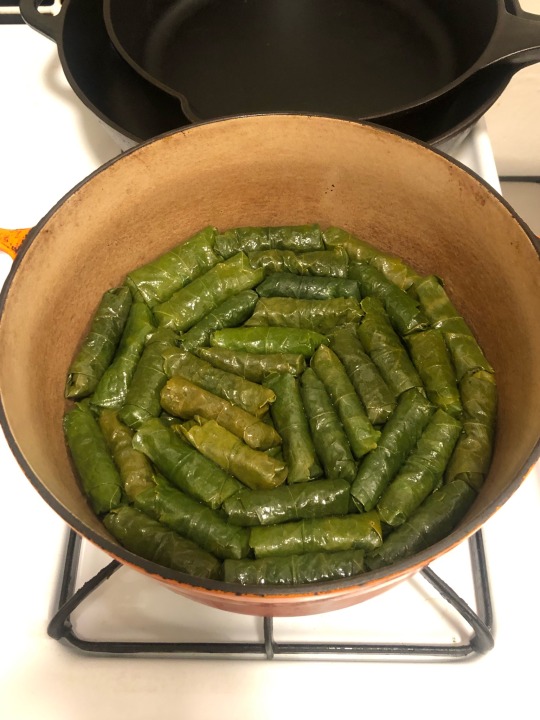
I would not make a good housewife for so many reasons but making my theia’s dolma recipe with grape leaves I cut off the fence behind my apartment is a triple word score excellent hashtag domestic goddess move
7 notes
·
View notes
Photo
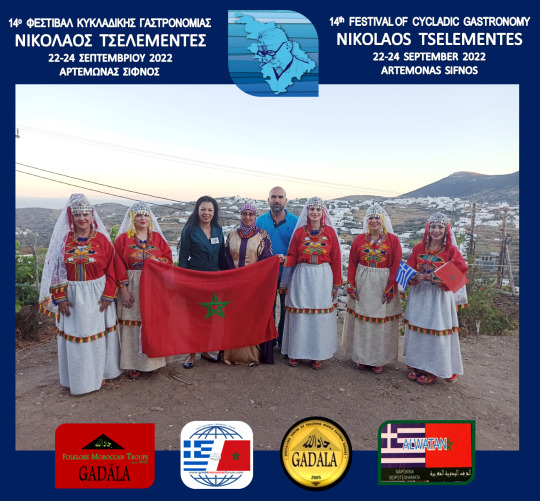
24.09.2022 - ...ΕΚΛΕΨΕ ΤΙΣ ΕΝΤΥΠΩΣΕΙΣ Η ΑΠΟΣΤΟΛΗ ΠΟΥ ΕΚΠΡΟΣΩΠΗΣΕ ΤΟ ΜΑΡΟΚΟ ΣΤΟ 14o ΦΕΣΤΙΒΑΛ ΓΑΣΤΡΟΝΟΜΙΑΣ "Ν.ΤΣΕΛΕΜΕΝΤΕΣ" ΣΤΟ ΟΜΟΡΦΟ ΝΗΣΙ ΤΗΣ ΣΙΦΝΟΥ!
(*Στιγμιότυπα από την 3η ημέρα διεξαγωγής του 14ου Φεστιβάλ Κυκλαδικής Γαστρονομίας Νικόλαος Τσλεμεντές)
(***Highlights from the 3rd day of the 14th Nikolaos Tslementes Cycladic Gastronomy Festival in Sifnos)
Educational, Gastronomical and Cultural Actions that take place under the 1st Forum of Greek and Moroccan Friendship
www.gadala.gr * 2103211008 * [email protected] *
.
.
.
tags: #GADALA #SIFNOS #ΣΙΦΝΟΣ #ΦΕΣΤΙΒΑΛ #TSELEMEDES #TSELEMENTES #ΣΥΝΤΑΓΕΣ #ΣΥΝΤΑΓΗ #ΚΥΚΛΑΔΕΣ #ΝΗΣΙΑ #ΝΗΣΙ #ΑΡΤΕΜΩΝΑΣ #CYCLADES #AIGAIO #ΑΙΓΑΙΟ #ΤΣΕΛΕΜΕΝΤΕΣ #ΜΑΡΟΚΟ #MOROCCO #UNESCO #GREEKMOROCCAN_FORUM #MOROCCAN_MUSIC #DANCE #GASTRONOMY
0 notes
Link

Every Greek household has a “tselemente” — a “cookbook” that took its name after Nikolaos Tselementes, the famous chef that combined modern cuisine with Greek tradition.
His book, “Cooking and Baking Guide” was published in 1926, and ever since, his name has been a synonym for every cookbook in Greece.
Nikolaos Tselementes was born in 1878 on the island of Sifnos. He grew up in Athens, where he finished high school.
At first, Tselementes worked at a notary office but was involved with cooking on the side, while he worked at his uncle’s restaurant. He studied the culinary arts for a year in Vienna, and upon his return he worked as a chef in various embassies.
He became famous through the magazine “Cooking Guide,” which began in 1910, containing recipes, dietary advice, international cuisine and news regarding food.
In 1919, Tselementes became the manager of the Ermis Hotel and one year later he left for the United States, where he worked in some of the most expensive restaurants in the world.
In the meantime, he also received yet more higher education in the culinary arts, including pastry making and dietetics.
5 notes
·
View notes
Video
youtube
Κ.Γώγου,«Εμένα οι φίλοι μου»-Magic De Spell, Σ.Μάλαμας
my friends are black birds
that make seesaw terraces ramshackle houses
Exarchia, Patissia Metaxourgeio, Metz
Do what lottery
salesman Tselementes and encyclopedias
They make roads and unite deserts
Interpreters cabaret of Zeno
Professional revolutionaries
Old them cornered and downed
Now get pills and alcohol to sleep
but dream and do not sleep
To me my friends are black birds To
me my friends are wires stretched
my friends are wires stretched
on the roofs of old houses
Exarchia, Victoria, Koukaki, Gizi
Above them you have nailed million iron pegs
your guilt,
conference decisions,
borrowed costumes,
signs kaftres
strange migraines,
threatening silences
vaginitis
fall in love Friendly
trichomoniasis
delay
The phone
broken glasses
The ambulance
Nobody…
To me my friends are black birds To
me my friends are wires stretched
They do what
they love My friends travel all the time
because you did not leave them for a moment
All my friends paint in black
because you cut them red
They write in sign language
because yours only for licking
My friends are black birds and wires
in your neck, in your hands
My friends…
To me my friends are black birds To
me my friends are wires stretched
1 note
·
View note
Photo

PlaymoGreek lady wearing the Sifnian traditional dress for the 13th Festival of Cycladic Gastronomy “Nikolaos Tselementes” in Sifnos Island, Greece. Sifnos island is famous for its cuisine and Sifnian Nikolaos Tselementes (1878 - 1958) is considered the most influential chef and cookbook writer of Greece to date. Another beautiful creation by Petros Kaminiotis.
#greece#europe#culture#traditional clothing#traditional costume#folk clothing#folk costume#playmobil#playmogreek#petros kaminiotis#sifnos#cyclades#cycladic islands#greek islands#greek culture#greek facts#greek cuisine
127 notes
·
View notes
Photo
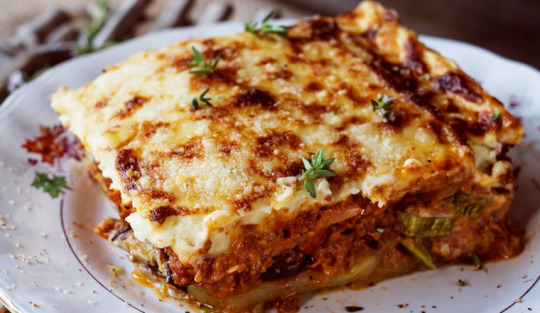
Moussaka
As a young child my great grandmother made lots of traditionally greek dishes. I was, and still am, absolutely obsessed with greek food. My favorite dish as a child was Moussaka, a Lasagna like dish with potatoes, eggplant, meat, tomato sauce, béchamel sauce and cheese. It has to be prepared with love, or else it won’t taste the same.
Moussaka is based on Madhmuma, a traditional Arabic dish which is said to have been cooked as far back as the 10th century. Moussaka was invented by Greek-born chef Nicholas Tselementes, a cookery writer of the 1920s who wanted to refine Greek peasent cooking.
1 note
·
View note
Photo

✿ Μουσακάς | ムサカ
・ギリシャ、バルカン半島とマシュリク、エジプトなど東地中海沿岸の伝統的な野菜料理。ムサカの起源はアラビア語で「冷やしたもの」を意味する「ムサッカア」で、「サッカア」(سقع / saqqaʿa、「冷たくする」の意)という動詞に由来する。このことから、マシュリクのムサッカアは冷菜として扱われていたことがうかがえる。
・ギリシャで最も一般的なムサカは、耐熱容器にオリーブ・オイルでソテー、または揚げたナスのスライス、マッシュポテトまたは火を通したジャガイモと一緒に調理したラムの挽肉、ベシャメルソース(ホワイトソース)を順に重ねてオーブンで焼いた、グラタンに似た料理である。このレシピは1920年代にギリシャ料理にフランス料理の要素を取り入れ、東洋的な要素を取り除いてギリシャ料理の「脱亜入欧」を計った料理人ニコラオス・ツェレメンテス(Nikolaos Tselementes)によって紹介されたものだといわれる。ベシャメルソースにはバターを使わないことがあり、使ってもほんの少しか、オリーブ・オイルを用いたり、クリームで代用することもある。チーズやパン粉が上にかかることも多い。基本的なレシピにはいくつものバリエーションがある。ソースを使わない場合もあるし、他の野菜が入る場合もある。ギリシャで一般的なのは、バリエーションとしてナスに加えズッキーニ、ジャガイモ、マッシュルームを使うものである。
・今日、ムサカの最も一般的なバージョンにはジャガイモも含まれていますが、この追加は19世紀半ばにのみ行われました。当初、ジャガイモはスライスでムサカに入ることはありませんでしたが、ヨーグルトの代わりに混合物で、すりおろしたチーズとピューレの形で入りました。その後、バター、小麦粉、ミルクで作られたフレンチスタイルのベシャメルソースを受け取りました。
#μουσακάς#Μουσακάς#ムサカ#ギリシャ#ギリシャ:2020〜#2020〜#food:ギリシャ#food:ギリシャ:2020〜#ギリシャ:ムサカ#地中海#food:地中海#food:地中海:2020〜#ギリシャ:主菜#ギリシャ:主菜:2020〜#ベシャメルソース#ギリシャ:ベシャメルソース#fusion:フランス+#fusion#fusion:フランス×ギリシャ#fusion:ギリシャ×フランス
0 notes
Link
0 notes
Photo
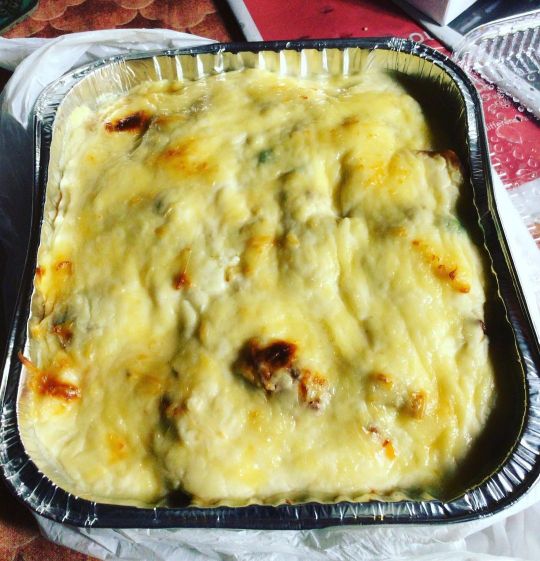
#Moussaka by @moussaka.klang. Moussaka is an eggplant- and/or potato-based dish, often including ground meat, which is common in the Balkans and the Middle East, with many local and regional variations. The best-known version in Europe and the Americas is the Greek variant created in the 1920s by Nikolaos Tselementes. #food https://www.instagram.com/p/CLo--qTpuBk/?igshid=1hsyb2xxpzt7i
0 notes
Text
Sifnos suggests the "restart recipe"! Watch the video

Sifnos, the Cycladic island of harmony, says it is ready to welcome its friends according to this year's opening plan of tourism!
As the birthplace of the timeless national chef Nikolaos Tselemente, the Municipality of Sifnos in collaboration with the professionals and institutions of the island, created the "restart recipe". Through a quick video with impressive shots, Sifnos "explains the recipe" and addresses every Greek potential traveler who wants to leave behind, the last months of incarceration and restart a quality and safe destination!
Explosive lakes, unique beaches, marked nature trails, ancient monuments protected by Unesco and incomparable architecture along with the unique pottery await the visitor to an island that knows well from recipes for success! The authentic Sifnian chickpeas, the sweets of the spoon, the mizithra and the fine cheeses and cooked dishes are cooked in handmade local clay pots and contain as their main ingredient the love of Sifnos for the land and the fellow human being.
However, the love of the locals is seen in the difficulties and it is proven in practice today! The Municipality together with the local bodies, the professionals and the residents joined forces to take all the necessary health and safety measures so that the next day the traveler can enjoy without worries a completely reliable and safe destination.
#estartrecipe #Sifnos
Read the full article
0 notes
Text
希臘茄子肉醬千層派Greek Moussaka

我非常喜歡這道幾乎在任何一間希臘餐廳都吃得到的美食Moussaka。
料理Moussaka可以分成3個部分:蔬菜、肉醬、Sauce Béchamel,最後再組裝(?)起來。希臘的做法是將蔬菜油炸過後鋪在烤盤底部,我則直接放在烤盤底部送進烤箱烤,過程的安排大概是這樣:利用烤馬鈴薯的時間來料理肉醬,肉醬炒好後需要燉一下。此時就烤茄子,再利用肉醬燉煮的時間做sauce béchamel,因為肉醬燉好的時候,要拌入滿滿2大匙這個香濃柔滑的牛奶醬汁,前提是一切順利的話...忘記曾在哪裡聽說過,喜歡烹飪的人較擅於規劃時間(?),或許真有那麼一回事。

蔬菜
<食材準備>
馬鈴薯-1個 切片
茄子-1個 切片
洋蔥-半個 切片
土耳其綜和香草
海鹽
黑胡椒
橄欖油
<做法>
1.烤箱以200度預熱,並一直保持此溫度。烤盤刷上橄欖油。
2.馬鈴薯及洋蔥放入攪拌盆,以橄欖油、海鹽、黑胡椒、土耳其綜合香草調味,平鋪入烤盤,放入烤箱烤30分鐘
3.茄子放入攪拌盆,以橄欖油、海鹽、黑胡椒、土耳其綜合香草調味,平舖在馬鈴薯上,再放入烤箱烤30分鐘

肉醬
<食材準備>
洋蔥-半顆 切末
蒜頭-2瓣 切末
牛絞肉-500g
肉桂
丁香
番茄糊-2大匙
罐頭番茄-1瓶(400g)
海鹽
黑胡椒
橄欖油
Sauce Béchanel-滿滿2大匙
<做法>
1.肉桂及丁香以研磨機磨成香料粉備用
2.取一只鍋,以橄欖油熱鍋,放入洋蔥炒至完美焦糖化(請注意是完美焦糖化)
3.加入蒜頭,拌炒
4.加入2小匙磨好的香料粉,拌炒
5.加入番茄糊,拌炒
6.加入牛絞肉,拌炒至牛肉上色
7.加入罐頭番茄,拌炒
8.以適量海鹽及黑胡椒調味
9.以低溫火力燉煮並收汁
10.離火後加入滿滿2大匙sauce béchamel,拌勻即可

我喜歡保有一點嚼勁的口感,沒有將牛肉絞的很碎。

Sauce Béchamel
<食材準備>
無鹽奶油-60g
低筋麵粉-60g
鮮奶-40cc
黑胡椒
肉豆蔻
帕瑪森乾酪粉
蛋黃-1個
<做法>
1.取一只醬汁鍋,加入奶油,以中低溫煮至奶油融化(注意絕不可焦化)
2.分批加入麵粉,以攪拌棒拌成麵糰狀
3.分批緩緩加入鮮奶,同時一邊攪拌。此動作重複進行數次,醬汁成乳霜狀即可離火
4.刨適量肉豆蔻,並以黑胡椒及帕瑪森乾酪粉增加風味
5.加入蛋黃,拌勻即可

最後,將食材組裝好。
1.將烤盤自烤箱中取出,肉醬平鋪在烤過的蔬菜上
2.sauce béchamel倒入烤盤均勻鋪在肉醬上,以抹刀抹平
3.撒上帕瑪森乾酪粉,放入烤箱烤30~40分鐘

人們普遍認為,當茄子在16世紀從阿拉伯傳入西方時,Mousakka這道以茄子與碎肉料理的美食便一起西進,這說明了為什麼所有地方的Moussaka名稱都來自阿拉伯根源musaqqa'a。今日,在阿拉伯世界、黎凡特地區、土耳其、希臘、乃至整個巴爾幹半島,Moussaka都是一道常見的菜餚,也能看到其他許多以茄子與肉末一起烹調的料理。當然,在不同的地方,Moussaka會有不同的做法與習慣吃法。土耳其Moussaka也相當美味,少了Sauce Béchamel的香濃,多了香料的鮮明風味。希臘與土耳其喜歡微溫享用Moussaka,阿拉伯國家則大多冷食。

Moussaka就像許多地區的常見菜色一樣,每個家庭有自己的獨門食譜。而最典型的現代希臘Moussaka型式是由20世紀初名廚暨最有影響力的希臘烹飪作家之一的Nikolas Tselementes所創造的。深受法式烹飪法的他,將法國料理靈魂五大母醬之一的貝夏美醬Sauce Béchamel運用於Moussaka之中,也將這個美味的醬汁帶入了希臘的家庭廚房,更現代化了希臘烹飪。
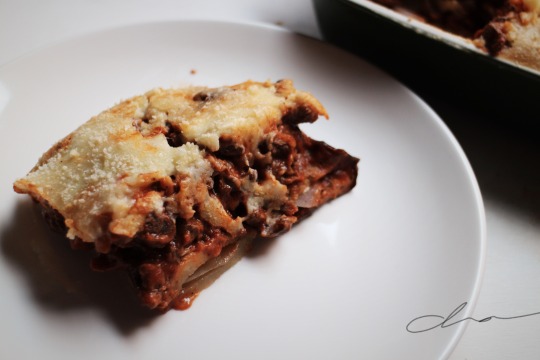
口感非常成功!
只是份量的估計還不太孰悉,Sauce Béchamel那層有點太薄。
剩下沒有吃完的半個Moussaka,放入冰箱,隔天回烤作為午餐,相當美味。
0 notes
Photo
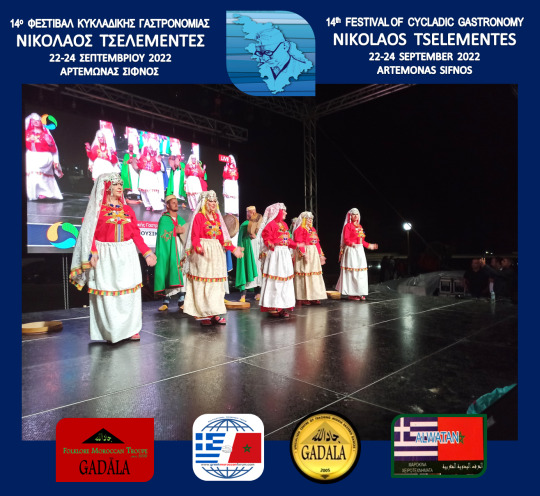
24.09.2022 - ...ΕΚΛΕΨΕ ΤΙΣ ΕΝΤΥΠΩΣΕΙΣ Η ΑΠΟΣΤΟΛΗ ΠΟΥ ΕΚΠΡΟΣΩΠΗΣΕ ΤΟ ΜΑΡΟΚΟ ΣΤΟ 14o ΦΕΣΤΙΒΑΛ ΓΑΣΤΡΟΝΟΜΙΑΣ "Ν.ΤΣΕΛΕΜΕΝΤΕΣ" ΣΤΟ ΟΜΟΡΦΟ ΝΗΣΙ ΤΗΣ ΣΙΦΝΟΥ!
(*Στιγμιότυπα από την 3η ημέρα διεξαγωγής του 14ου Φεστιβάλ Κυκλαδικής Γαστρονομίας Νικόλαος Τσλεμεντές)
(***Highlights from the 3rd day of the 14th Nikolaos Tslementes Cycladic Gastronomy Festival in Sifnos)
Educational, Gastronomical and Cultural Actions that take place under the 1st Forum of Greek and Moroccan Friendship
www.gadala.gr * 2103211008 * [email protected] *
.
.
.
tags: #GADALA #SIFNOS #ΣΙΦΝΟΣ #ΦΕΣΤΙΒΑΛ #TSELEMEDES #TSELEMENTES #ΣΥΝΤΑΓΕΣ #ΣΥΝΤΑΓΗ #ΚΥΚΛΑΔΕΣ #ΝΗΣΙΑ #ΝΗΣΙ #ΑΡΤΕΜΩΝΑΣ #CYCLADES #AIGAIO #ΑΙΓΑΙΟ #ΤΣΕΛΕΜΕΝΤΕΣ #ΜΑΡΟΚΟ #MOROCCO #UNESCO #GREEKMOROCCAN_FORUM #MOROCCAN_MUSIC #DANCE #GASTRONOMY
0 notes
Link
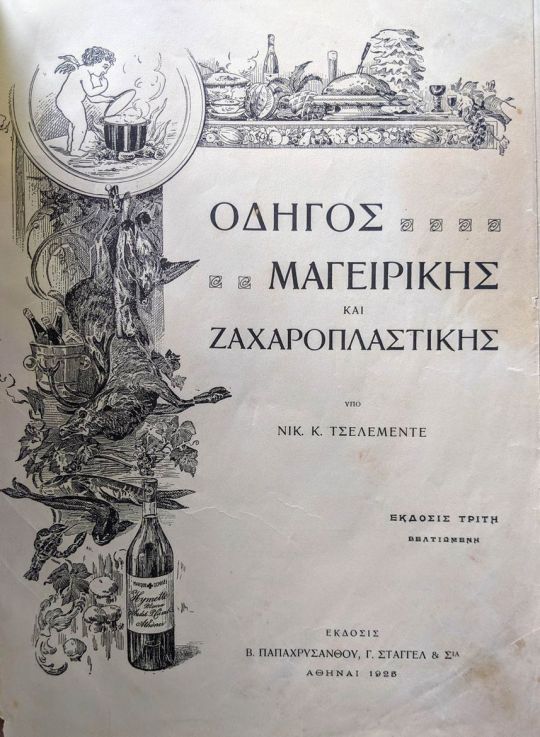
The Greek language is dizzying in sound and practice, full of intonations and complicated grammar with exception after exception to the okay, generally, this is the rule. Ostensibly, it has a specific word (or five) for everything. Kerasmata is for the treats you serve an unexpected guest who visits you at home—some cookies, perhaps, or a few squares of dark chocolate. Meraki means things done from the heart, with joy and devotion.
But when it comes to the most popular word for cookbook, the name is drawn not from one specific feeling, but from one specific man. "When we tell someone to pass us a cookbook, we say "Dose mou ton tselemente"—a friend tells me one night in Athens, gesturing with the universal sign for "give me." Give me the tselemente. Though there is another word for cookbook—vivlio mageirikis, which literally means "cooking book"—tselemente is the most beloved, historic even. "If you ask someone older for a vivlio mageirikis, they'll just stare at you and say, 'You mean a tselemente?'" says another friend.
The word "tselemente" draws its associations from Nikolaos Tselementes, considered the most influential chef in Greek history. Born in 1878 on the island of Sifnos, Tselementes later studied cooking in Vienna and worked in the U.S. before returning to Greece. In 1932, he published Odigos Mageirikis, the first complete cookbook in Greece, where recipes—up until that point—had typically been handed down orally. The book was a commercial bonanza, so much so that Odigos Mageirikis had 15 official reprints in the decades following.
9 notes
·
View notes
Text
Odyssey’s end: exploring Milos and Sifnos, Greece | Travel
Dawn was breaking as I swam out from Paliochori beach. Twenty metres offshore, in the first rays of sunlight, I could see bubbles emerging from the sea bed. There was a roaring in my ears, like Poseidon’s kettle about to boil, plus some alarming gusts of warm water. Island of Milos, I thought, you are full of surprises: a volcanic Jacuzzi in the sea itself. Then I got out of the water and walked up the beach barefoot, straight into my second surprise: a thorn bush.
Milos & Sifnos
I yanked out every single one of the finger-long spines, but the last one broke off in my ankle. An hour later I couldn’t put my foot down. Was Milos having a joke? Anyone for island-hopping?
Milos was the fifth stop on my exploration of the lesser known Aegean islands, a journey that has revealed the wonderful diversity within those specks of land scattered between mainland Greece and Turkey. But Milos, I was fast realising, is different on a wholly different scale: starker, sharper and sometimes downright weird. There’s a beach only accessible by ladder, a taverna that stands in the sea and strange rock formations everywhere.
I was staying in a lovely hotel, Villa Notos, tucked into the cliffs on the outskirts of the port town of Adamanatas. My next few days were supposed to be spent hiking, but that prospect now seemed unlikely. Elena, the hotel owner, dug around in my ankle with a needle and declared the thorn too deep. I caught the bus up the mountain to the hospital where a stern-faced doctor spent 10 minutes exploring the interior of my ankle with a longer needle, then told me there was no thorn. I agreed: anything to escape his alarming ability to withstand pain, in other people. I could feel the thorn. I named it Odysseus and put a plaster on the livid red scar where he had entered the Trojan horse called Kevin.
Clambering down the ladder to Tsigrado beach on Milos. Photograph: Kevin Rushby/The Guardian
Elena at the hotel was determined to find things I could do while hosting Odysseus. She called her friend Dimitrios, who had the keys to the caves under the hotel. I only had to hop down two flights of steps and there was Dimitrios next to a huge iron door that I hadn’t noticed before. We entered a long tunnel in the rock and walked into the mountain.
“In the second world war,” Dimitrios said, “the Germans occupied Milos because of its natural harbour. They tunnelled into here to create stores and a hospital.”
For years after the war the tunnels lay empty and unused, a warren of cool caverns, crying out for a purpose. Now Dimitrios and friends have started putting on art shows, which add surreal touches to some of the spaces.
I went up to see Elena. “Sit down on your terrace and we’ll bring you food.”
In the tunnels below Adamanatas town, Milos Photograph: Kevin Rushby/The Guardian
Elena is Greek hospitality incarnate. Sit in front of her impressive desk overlooking the little beach below and before long coffee and cake will appear. Give it a little longer and some fascinating story will emerge, maybe about her great grandfather, who refused to surrender his pistols to the government and was named after his moustache – I’m summarising. Homemade cheese pie came on a tray with coffee. Later a bus timetable and map arrived, along with a message. I was to go to the costume and cultural museum up the mountain at Plaka.
The bus services on Milos are excellent. I rode up the hill, then limped through the labyrinthine lanes of Plaka. Down by the sea you might find “happy hour” bars and souvenir shops, but Plaka feels authentic: family houses, children’s toys in the alley, cats, a few good restaurants and bars. One of the houses has been turned into a museum. It’s a tiny place and you could easily miss it. There are no videos, no interactive exhibits, not even a demonstration of anything. Were it not for Odysseus, I would never have gone, and never met the custodian, Iro. “Elena Gaitanis sent you? Did you know her surname means ‘curly moustache’? Let me show you her great grandfather.”
His photo was on one wall: a piratical outlaw in giant pantaloons, pistols in his belt and that eponymous moustache. No wonder that when the island governor had demanded he surrender his pistols, Gaitanis had sent word: “Come and get them.” But nobody dared.
Iro (left) with visitors in Plaka’s cultural museum. Elena’s great-grandfather is in the photo on the wall. Photograph: Kevin Rushby/The Guardian
With Iro as guide the museum was a revelation, a window into the former life of the island. She told me how every evening in Plaka would end with each housewife calling in her chickens by name, showed me the surprising dresses women wore for their wedding nights, explained how the priest got his daily bread, and so on and on. Each time I was about to leave, she yelled, “Stop! There’s one thing I must show you.”
Eventually I hobbled away and climbed steps to the top of the hill, the fort, where I enjoyed the magnificent view and took off my boots. The plaster was intact. Another bus ride took me back to sea level and the wonderful Klima, a series of colourful boathouses dug into the cliff. I swam and fell asleep on a bench. Next morning Elena enquired after my ankle. The plaster had survived one swim and two showers. Odysseus had gone quiet. I could walk again, and island hop too.
The last island on my adventure was Sifnos, a 50-minute ferry ride away. It loomed up on the horizon, looking massive and forbidding and far quieter than Milos. I stayed at Delfini, a friendly little hotel on the rocky coast within walking distance of the port. I took a rest day for the sake of my ankle and then set off at 5am on what I had decided would be my last and most ambitious yomp of the trip.
I climbed the vast mountainside opposite the hotel in semi-darkness, crossed a windy ridge and then took an ancient cliff path through crumbling antique terraces fragrant with juniper, thyme and sage. I drank from springs and explored abandoned villages. Lizards and partridges scattered before me. At midday I reached Vathy, a seaside village popular with French tourists.
Kevin on the trail on Sifnos
After a swim I chose the simplest taverna and ordered revithada, chickpea stew, a Sifnos speciality. George, the owner’s son, talked proudly of the island’s culinary traditions. “When people have a cooking question in Greece, or they want a recipe, they say, ‘look in Tselementes’. It’s a book – the book. Tselementes has come to mean fine cooking. But Nikólaos Tselementes was a real person, a chef from Sifnos.” (He wrote an influential cooking series in 1910 called Odigos Mageirikis but his name has become a synonym for “cookbook.”)
George brought me caper salad, another Sifnos delicacy. Eventually I dragged myself away and continued walking, now in stunning heat, over a couple of hills and down to a deserted beach at Fikiada, where I collapsed in the shade after a swim.
Later, in golden evening light, I found some spectacularly ancient olive trees, hollowed-out giants that might have been saplings when Alexander the Great was alive. The oldest olive tree in Greece is said to be more than 3,000 years old.
George and his mum, owners of Taverna Symposio at Vathy on Sifnos. Photograph: Kevin Rushby/The Guardian
I walked on and on until dark, then caught the last bus home. My Greek walking epic was finished.
It had been a wonderful and inspiring journey. Behind its success lay a comprehensive and reliable ferry system (it never failed me), and a dependably hospitable roster of small family-run hotels. I never ate fancy or expensive food, often happy with pies from the bakery or a salad. It was the simple things I enjoyed most: the morning light, the sun-blessed tomatoes, the antique cobbled paths, the cool swims, the falcons playing with the wind.
Every morning at dawn I pulled on my boots, eager to get outside and see what the day would bring. And they all brought sheer pleasure.
Except, of course, for Odysseus. That accursed wanderer came back to England with me, hiding under the miraculously tenacious plaster. And then, when I first got in a car to drive, as if in horror at the end of my glorious summer of walking, he protested. I reached down, ripped that plaster off, and there, stuck to the surface, was a grisly black thorn, a centimetre long. Odysseus had made his point: my island-hopping was over – for now.
• Accommodation was provided by Inntravel, whose three-centre, ten-night, self-guided Enchanting Cyclades walking tour starts at £915pp, including B&B, notes and maps, transfers between ports and hotels and an internal flight Milos to Athens. Book ferries at ferries.gr; Folegandros to Milos €39.80, Milos to Sifnos €15, Sifnos to Piraeus €50. Accommodation in Athens was provided by The Foundry Suites (apartments for two from £102)
Looking for a holiday with a difference? Browse Guardian Holidays to see a range of fantastic trips
The post Odyssey’s end: exploring Milos and Sifnos, Greece | Travel appeared first on Tripstations.
from Tripstations https://ift.tt/2U1Qxd0
via IFTTT
0 notes
Text
Görög gasztronómia II.
4. Muszaka
A muszaka a görög, török, balkáni vidék egyik kedvelt fogása, amelynek az alapját a padlizsán és a darált bárányhús adja.
A muszaka eredete és kora ugyan nem tisztázott, de egyértelműen a Földközi-tenger vidékének étele, a balkáni konyha sajátja.
Többféle változata ismert, manapság azonban főleg a görög muszakát ismerik és készítik.
A ma ismert muszakát egy Bécsben tanult, sokáig külföldön dolgozó görög séfnek köszönhetjük, név szerint Nikolaos Tselementes-nek, aki egy 1920-ban megjelenő szakácskönyvében vetette papírra a ma ismert besameles változatot.
A muszaka három alapvető összetevője a zöldség, a hús és a szósz. A muszakába leggyakrabban padlizsán, hagyma, krumpli és paradicsom kerül.
ermészetesen egyéni kísérleteinknek köszönhetően tehetünk bele főtt sárgarépát, cukkinit, spenótot stb.
A klasszikus muszakát sokféleképp variálhatjuk.
A zöldségek és a húsok mibenléte nagyban befolyásolja a végeredményt.
Fűszerei közé tartozik a keleten is kedvelt fahéj, illetve a fokhagyma, a római kömény, a szerecsendió vagy épp a különféle mediterrán zöld fűszerek, mint a babérlevél, az oregánó, a bazsalikom vagy a bárányhússal remek viszonyt ápoló rozmaring és menta.
Ezenkívül nyugodtan ízesíthetjük a fogásunkat egy kevés borsikafűvel, esetleg citromos kakukkfűvel, zsályával vagy Cayenne-borssal.
5. Gyros
A legrégebbi forgónyársról készült fénykép, amit találtunk, 1855-ból való.
A képet James Robertson angol fotós készítette, aki egyike volt az első háborús fotósoknak.
A kép Isztambulban készült.
Egyes források szerint George Apostolou amerikai étterem tulajdonos 1965-ben, a Parkview nevű étteremben csinált először gíroszt, a chicagoi, Illinois-ban.
Egy másik történet szerint chicagoi illinois Greektownból ered a görög specialitás, hagyományukat őrizve.
Vannak akik azt állítják hogy a gyros sorozatgyártását ó már idővel azelőtt elkezdte, mint azt mondják.
A gírosz története azonban közel sem ilyen egyszerű, hiszen van, aki a korábbi időkben keresi a megoldást az eredetére.
Sokan úgy vélik, a gyros a török döner kebab-ból származik, amelyet először Iskender Efendi készített el 1867-ben a jelenlegi Kayhan Bazár területén, a törökországi Bursa városában.
Ezen verzió szerint a Gyros Tesszaloniki városon keresztül került be Görögországba, különösen Szaloniki keleti oldalán át, a Toumba negyedből.
Mi is a gyros, miből áll?
A gyros egy tál függőleges nyárson sült hús, amelynek külső, ropogós rétegét vékony csíkokra szeletelve, függőlegesen vágják le a nagy húsnyársról.
A leszeletelt húsforgácsot általában olajozott, enyhén grillezett pitába tekerve, szendvics formában szolgálják fel, paradicsommal, hagymával és tzatziki szósszal (joghurtos uborkasaláta).
Készítette: Liskány Csenge Regina
0 notes